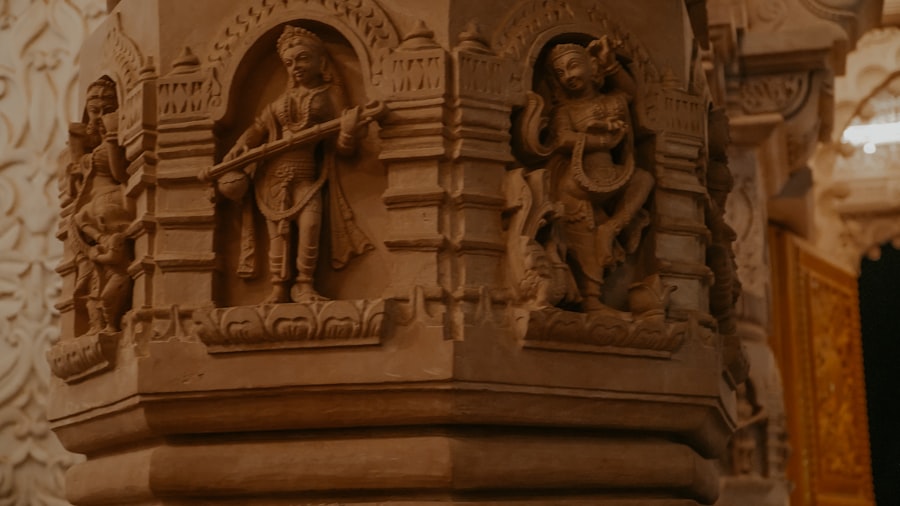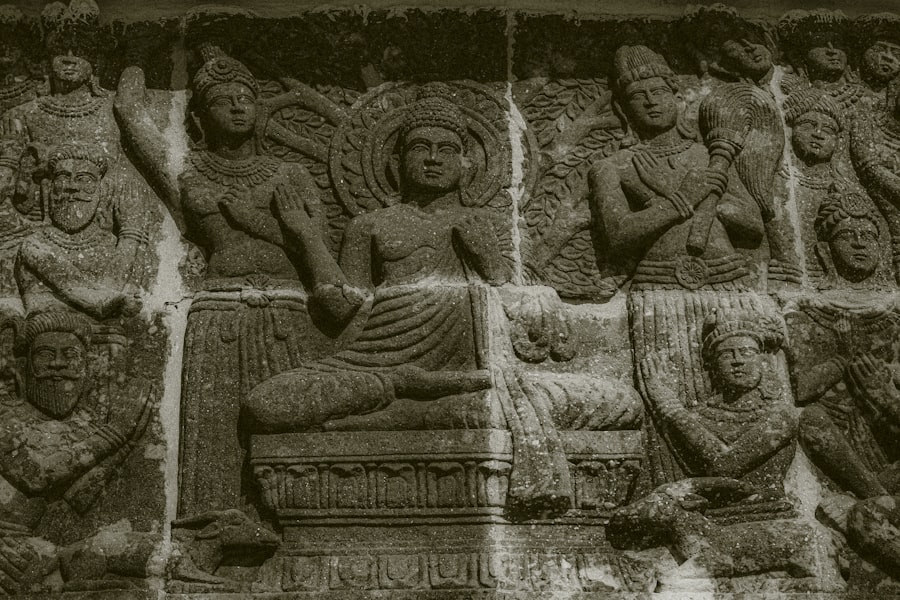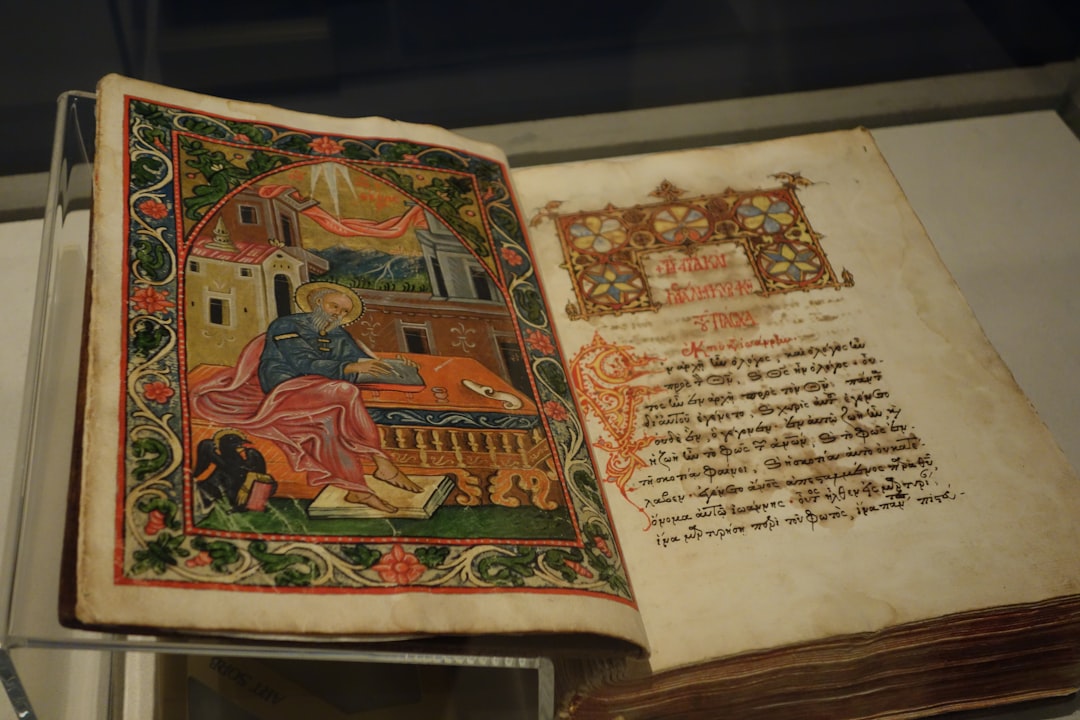Medieval India, spanning from the 8th to the 18th centuries, was a period marked by a rich tapestry of languages and literary traditions. This era witnessed the flourishing of numerous regional languages, each contributing to the cultural and intellectual landscape of the subcontinent. Sanskrit, the classical language of ancient India, continued to hold sway, particularly in religious and philosophical texts.
However, it was during this time that vernacular languages began to emerge as significant mediums for literary expression. Languages such as Hindi, Bengali, Tamil, Telugu, and Kannada gained prominence, allowing local populations to engage with literature in their mother tongues. This linguistic diversity not only enriched the literary scene but also facilitated the transmission of ideas across different regions.
The literary traditions of medieval India were equally varied, encompassing poetry, prose, drama, and religious texts. The Bhakti movement, which emphasized personal devotion to God, gave rise to a plethora of devotional poetry in regional languages. Saints like Kabir, Mirabai, and Tulsidas composed verses that resonated with the common people, transcending social and religious boundaries.
In contrast, Persian literature also found its way into India during this period, particularly under the patronage of various dynasties such as the Mughals. The fusion of Persian literary forms with indigenous themes resulted in a unique body of work that reflected the syncretic culture of medieval India. This interplay between languages and literary traditions not only highlights the diversity of expression but also underscores the complex socio-political dynamics that shaped medieval Indian society.
Key Takeaways
- Medieval India was home to a diverse range of languages and literary traditions, reflecting the rich cultural tapestry of the subcontinent.
- Persian and Arabic played a significant role in shaping medieval Indian historiography, influencing the writing of historical accounts and shaping the intellectual landscape of the time.
- Regional languages and vernacular literature had a profound impact on historical narratives, providing alternative perspectives and enriching the historical record.
- Oral traditions and folklore played a crucial role in shaping historical memory, preserving the voices and experiences of marginalized communities.
- Women’s perspectives in medieval Indian history have often been overlooked, but uncovering these marginalized voices is essential for a more comprehensive understanding of the period.
- The legacy of medieval Indian historiography continues to impact modern scholarship, shaping our understanding of the subcontinent’s rich and complex history.
The Role of Persian and Arabic in Medieval Indian Historiography
The introduction of Persian and Arabic into the Indian subcontinent marked a significant turning point in the historiographical landscape of medieval India. Following the establishment of Muslim rule in various parts of India, particularly during the Delhi Sultanate and later the Mughal Empire, Persian became the language of administration and high culture. This shift had profound implications for historical writing, as Persian historians began to document events, rulers, and societal changes in a systematic manner.
Notable figures such as Al-Biruni and Ibn Battuta provided detailed accounts of their observations in India, blending geographical knowledge with historical narrative.
Chroniclers like Abu’l-Fazl Allami, who authored the “Akbarnama,” not only chronicled the reign of Emperor Akbar but also provided insights into the socio-cultural milieu of the time.
The use of Persian allowed for a more sophisticated narrative style that incorporated poetry and eloquent prose, elevating historical accounts to a form of art. Furthermore, Arabic texts contributed to this historiographical tradition by introducing Islamic perspectives on history, emphasizing religious contexts and moral lessons. The synthesis of these languages created a rich historiographical tradition that influenced subsequent generations of historians in India.
The Influence of Regional Languages and Vernacular Literature on Historical Narratives

While Persian and Arabic played pivotal roles in shaping historical narratives during medieval India, regional languages and vernacular literature also made significant contributions to historiography. The emergence of regional languages as vehicles for historical expression allowed local narratives to flourish, often reflecting the unique cultural identities of different communities. For instance, in Maharashtra, the Marathi language became a medium for chronicling local history through works like “Dnyaneshwari,” which not only served as a commentary on the Bhagavad Gita but also provided insights into the socio-political context of 13th-century Maharashtra.
The “Chaitanya Charitamrita,” written in Bengali by Krishnadasa Kaviraja, narrates the life and teachings of Chaitanya Mahaprabhu while simultaneously reflecting the socio-religious dynamics of 15th-century Bengal. These vernacular works often incorporated oral traditions and folklore, making them accessible to a broader audience.
By weaving together historical facts with local legends and cultural practices, regional literature enriched the understanding of history from diverse perspectives.
The Importance of Oral Traditions and Folklore in Shaping Historical Memory
Oral traditions and folklore played an indispensable role in shaping historical memory during medieval India. Long before written records became commonplace, communities relied on oral storytelling to transmit knowledge about their pasts. These narratives often blended history with myth, creating a rich tapestry that reflected collective identities and values.
Bards and storytellers were crucial in preserving these oral traditions, recounting tales of heroes, battles, and significant events that shaped local histories. The oral tradition was particularly vital in regions where literacy rates were low or where written records were scarce. For example, in Rajasthan, folk ballads known as “Ghazals” celebrated the valor of Rajput warriors while simultaneously embedding moral lessons within their narratives.
These stories not only served as entertainment but also reinforced social norms and cultural pride among communities. As these oral histories were passed down through generations, they became integral to the collective memory of various groups, influencing how they perceived their pasts and identities.
Women’s Voices in Medieval Indian History: Uncovering the Marginalized Perspectives
The historiography of medieval India has often overlooked women’s contributions and experiences, relegating them to the margins of historical narratives. However, recent scholarship has begun to uncover the voices of women who played significant roles in shaping their societies. Women from various backgrounds—royalty, artisans, poets—contributed to cultural production and social change in ways that have been historically underrepresented.
For instance, women like Rani Durgavati of Gondwana demonstrated remarkable leadership during times of conflict while also engaging in patronage of arts and literature. Similarly, poets like Mirabai not only expressed their devotion through poetry but also challenged societal norms regarding gender roles and spirituality. Their works provide valuable insights into women’s experiences during this period, revealing how they navigated patriarchal structures while asserting their agency.
By examining these marginalized perspectives, historians can gain a more nuanced understanding of medieval Indian society that acknowledges the complexities of gender dynamics.
The Legacy of Medieval Indian Historiography and its Impact on Modern Scholarship

The historiographical traditions established during medieval India have left an indelible mark on modern scholarship. The synthesis of diverse languages and literary forms created a rich repository of historical knowledge that continues to inform contemporary studies. Scholars today draw upon these medieval texts to explore themes such as cultural exchange, identity formation, and social dynamics within Indian society.
Moreover, the methodologies employed by medieval historians—such as integrating oral traditions with written records—have influenced modern historiographical practices. Contemporary historians are increasingly recognizing the importance of interdisciplinary approaches that encompass literature, anthropology, and cultural studies to construct more comprehensive narratives. The legacy of medieval Indian historiography thus serves as a reminder of the complexities inherent in understanding history as a multifaceted construct shaped by diverse voices and experiences.
In conclusion, the exploration of medieval Indian historiography reveals a vibrant interplay between languages, literary traditions, oral narratives, and marginalized voices that collectively shape our understanding of this period. As modern scholars continue to engage with these rich historical sources, they contribute to a more inclusive narrative that honors the diversity and complexity of India’s past.
For further exploration of ancient philosophical traditions, readers may be interested in the article Ancient Greek Philosophy: Exploring the Thinkers of Thales, Anaximander, Anaximenes, Pythagoras, Heraclitus, Democritus, Parmenides, and Zeno. This article delves into the foundational ideas and contributions of key figures in the development of Western philosophical thought. By comparing and contrasting these ancient Greek perspectives with the historical voice of Medieval India, readers can gain a more comprehensive understanding of the diverse philosophical traditions that have shaped human civilization.
FAQs
What is the significance of the Sanskrit tradition in medieval India?
The Sanskrit tradition was significant in medieval India as it was the language of the elite and the religious texts were primarily written in Sanskrit. It was also the language of the ruling class and the literary and philosophical works of this period were predominantly in Sanskrit.
What are the limitations of relying solely on the Sanskrit tradition for understanding medieval India?
Relying solely on the Sanskrit tradition for understanding medieval India can be limiting as it provides a narrow perspective that primarily represents the views of the elite and the ruling class. It may not accurately reflect the experiences and perspectives of the diverse population of medieval India.
What are some alternative sources for understanding medieval India’s history?
Alternative sources for understanding medieval India’s history include inscriptions, regional languages, folklore, and oral traditions. These sources provide a more diverse and inclusive perspective of the historical voices and experiences of medieval India.
How do alternative sources contribute to a more comprehensive understanding of medieval India?
Alternative sources contribute to a more comprehensive understanding of medieval India by providing insights into the lives and experiences of non-elite populations, as well as different regions and communities. They offer a more holistic view of medieval Indian society and culture.
Why is it important to go beyond the Sanskrit tradition in studying medieval India?
It is important to go beyond the Sanskrit tradition in studying medieval India to gain a more comprehensive and inclusive understanding of the historical voices and experiences of the diverse population of medieval India. This approach allows for a more nuanced and balanced interpretation of the period.























+ There are no comments
Add yours